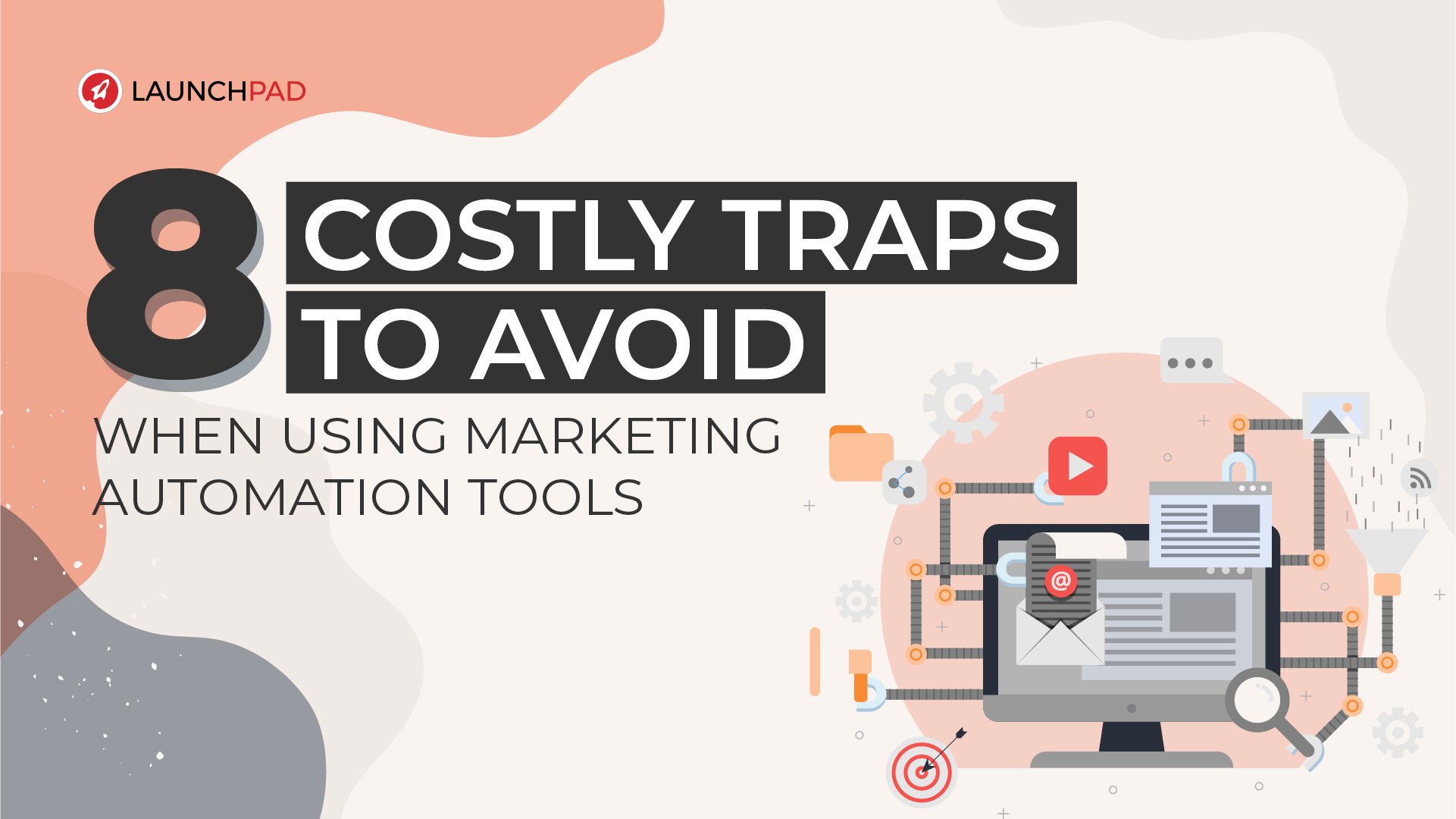
Did you know that 91% of marketers agree that marketing automation tools are “very important” to the overall success of their online marketing activities? In addition, 4 in 5 users increased their leads after using marketing automation software.
Indeed, marketing automation is a crucial tool for businesses. That is why it is very important for users of these tools to know how to use them and what errors to avoid. Let’s look at 8 such traps that you should steer clear of when using marketing automation tools.
1. Not Integrating with Your CRM
A customer relationship management (CRM) is a tool used to store and organise information about those who interact with your business, particularly customers and prospects. Some marketers use CRM and marketing automation separately (two different providers). And one of the cardinal mistakes a marketer can make is not integrating the two databases.
Your CRM stores valuable information about your customers such as email addresses, buying stage, and past interactions. If your marketing is not utilising this data, then your campaigns won’t fulfil their potential and the data will be wasted.
That’s why it is smarter to opt for a marketing tool that offers both marketing and CRM in its tech stack. This makes integration effortless without the need to export or import files, or do custom API integrations.
Read more: Simply the Best Way to Organize Your Business Contacts
2. Not Segmenting Your Contact List

For those of us who have an integrated CRM and marketing automation, there is still a lot of work to be done. If your customer contact list is not segmented, your marketing campaigns will fall short. Segmentation is when you organise and group contact lists who share similar traits together, be it shopping behaviour, lifecycle, or other relevant categories.
By segmentation, you can customise your marketing messages to speak to your target audience and appeal to them better. You should not, for example, send a new customer promo email to an existing customer. However, the same promo email would be very enticing to prospects who have yet to make their first purchase with you.
3. Sending Generic Emails
With marketing automation, emails can be sent in bulk super fast and easy. But with this power, comes great responsibility to your subscribers. If you keep spamming your subscribers’ inbox with promos and announcements that might not be relevant to them, you risk high unsubscribe rates and spam flags.
Instead, be deliberate with your emails. Other than the content and recipients, you should also think about the frequency of emails your subscribers are getting, what time of day, and sort of media you’re embedding. Some marketing automation provides personalisation. This means that your emails will look like you're speaking directly to each individual subscriber, making your brand even more appealing to them.
4. Set & Forget (Not Optimising)

Of course, the point of an automation is so you can set a year’s worth of marketing materials to be scheduled and arranged. But this ‘set & forget’ approach could damage your ROI and result in you missing out on your campaign’s potential.
Therefore, instead of giving attention to output (something your marketing automation is taking over), you should check in regularly to monitor performance. Your focus should be on optimising and finding ways to make your marketing perform better.
5. Leaving Your Data Dirty

58% of B2B professionals say that quality data was the no.1 tactic that most amplified their marketing automation success. Data hygiene is when your customer database is accurate, updated, and regularly scanned for duplicates, inconsistencies and other errors. Dirty data can cost your marketing and business terribly because you’re taking actions based on inaccurate and outdated data.
Which is why you should periodically check and update your customer data. For example, you can look at your email metrics and remove disengaged contacts, bounced recipients, and spam addresses. Dirty data not only costs you time and money, but it can also damage your IP reputation and online integrity.
6. Not Doing Testing
With automation, marketers can create and publish landing pages, emails, blogs and ads without ever leaving the desk. But we should not forget that these tools still need human intervention. As mentioned, we still need to monitor, optimise and make decisions that will favour the campaign.
You can use automation to your advantage by doing A/B testing before a full launch. An A/B test compares two versions of your material and helps you decide which version performs better. You can test which CTA, email subject line, ad visual, or landing page layout best suited for your target audience and campaign goals.
7. Not Having a Plan
Another cardinal mistake one can make is using a marketing automation tool without any goals or plans. As marketers, we often need to report campaign metrics to justify the resources used, including the cost of getting the very marketing automation employed.
Start with the basics of a marketing plan, use the SMART goal-setting approach, and set your KPIs for each campaign. Depending on the tools you chose, the goals can be defined into the system for easier monitoring. By having a plan, you’ll ensure that the activities done with the automation share the same strategic mission.
8.Not Aligning with Sales & Other Departments

When you insist on using your marketing automation in silo, you risk a gap within the buyer’s journey, missing out on prospects, and wasting your entire team’s efforts. Your marketing automation should also involve the sales team, customer service, business development, and other departments at least periodically.
With sales especially, you should explore how automation can help nurture leads, attribute lead scoring, and create processes that increase MQLs and SQLs. Conversations with the sales team can help marketers define what a high-intent behaviour is thus making the buying process more structured and strategic.
Conclusion
Marketing automation makes a lot of things possible for millions of users around the world. It democratises digital and content marketing, levelling up the playing field regardless of business size and geographical locations.
However, it is only as effective as the users and teams handling it. So take the time to ask yourself if you’re using the tools to its fullest potential. Tools such as HubSpot Marketing Software enables users to execute a lot of marketing activities, and it comes with a robust CRM tool and many other integrations.



